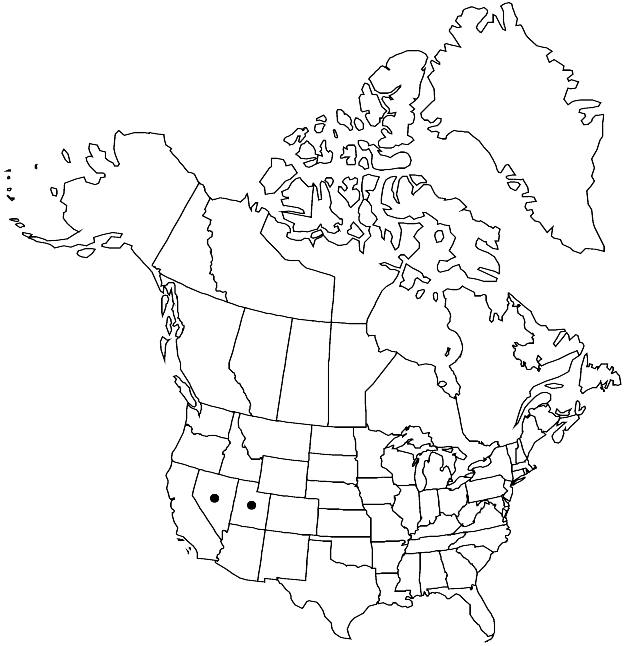Draba pedicellata
Madroño 50: 221. 2004.
Perennials; (loosely cespitose); caudex branched (with persistent leaf bases, branches sometimes terminating in sterile rosettes); scapose. Stems unbranched, (0.15–)0.3–1.3(–1.6) dm, pubescent proximally, glabrous or nearly so distally, trichomes 2- or 3-rayed and simple, 0.1–1 mm. Basal leaves rosulate; subsessile; blade oblanceolate to obovate, 0.4–1.6(–2) cm × 2–4(–6) mm, margins entire, (not ciliate), surfaces pubescent with stalked, 2–4-rayed trichomes, 0.2–0.9 mm, rarely adaxially with simple trichomes, (midvein obscure abaxially). Cauline leaves 0. Racemes 3–20(–27)-flowered, ebracteate, slightly to considerably elongated in fruit; rachis straight or flexuous, usually glabrous, rarely pubescent, trichomes simple and 2–4-rayed. Fruiting pedicels divaricate to horizontal, straight or curved upward (expanded basally or not), 4–9(–13) mm, glabrous or pubescent, trichomes simple and 2–4-rayed. Flowers: sepals broadly ovate, 1.8–2.5 mm, glabrous or pubescent, (trichomes simple and branched); petals yellow, spatulate, 3.5–5.5 × 1.5–2.2 mm; anthers ovate, 0.4–0.5 mm. Fruits lanceolate to ellipsoid or ovoid, plane (not curved), inflated or slightly flattened, (4.2–)5.3–10(–13) × 2.5–4.5(–5.5) mm; valves glabrous or pubescent, trichomes simple and short-stalked, 2-rayed, 0.05–0.3 mm; ovules 8–16 per ovary; style 0.3–1(–1.2) mm. Seeds oblong, 1.2–1.6 × 0.7–0.9 mm. 2n = 20.
Phenology: Flowering May–Jul.
Habitat: Rock outcrops, talus, steep gravel slopes in pinyon-juniper, mixed conifer, and subalpine meadow communities
Elevation: 2300-3800 m
Distribution

Nev., Utah.
Discussion
Draba pedicellata is known from Elko, Eureka, Nye, and White Pine counties in northeastern Nevada and to Tooele County in northwestern Utah. It was considered a variety of D. cusickii by R. C. Rollins (1993); chromosome number, morphology, and geographic distribution suggest a closer relationship to D. sphaeroides. For a detailed discussion and comparison of these species, consult M. D. Windham (2004). N. H. Holmgren (2005b) divided D. pedicellata into two varieties: var. pedicellata, which is found on limestone throughout the species range, and var. wheelerensis, which is found on non-calcareous substrates in White Pine County. Although var. wheelerensis has slightly more spreading pedicels on somewhat more flexuous rachises, it appears to be little more than a dwarf alpine form of the species.
Selected References
None.